SPQRModern Italian Food and Wine
A cookbook and wine guide celebrating the regional traditions and exciting innovations of modern Italian cooking, from San Francisco’s SPQR restaurant.
The Roman Empire was famous for its network of roads. By following the path of these thoroughfares, Shelley Lindgren, wine director and co-owner of the acclaimed San Francisco restaurants A16 and SPQR, and executive chef of SPQR, Matthew Accarrino, explore Central and Northern Italy’s local cuisines and artisanal wines.
Throughout each of the eight featured regions, Accarrino offers not only a modern version of Italian cooking, but also his own take on these constantly evolving regional specialties. Recipes like Fried Rabbit Livers with Pickled Vegetables and Spicy Mayonnaise and Fontina and Mushroom Tortelli with Black Truffle Fonduta are elevated and thoughtful, reflecting Accarrino’s extensive knowledge of traditional Italian food, but also his focus on precision and technique. In addition to recipes, Accarrino elucidates basic kitchen skills like small animal butchery and pasta making, as well as newer techniques like sous vide—all of which are prodigiously illustrated with step-by-step photos.
Shelley Lindgren’s uniquely informed essays on the wines and winemakers of each region reveal the most interesting Italian wines, highlighting overlooked and little-known grapes and producers—and explaining how each reflects the region’s unique history, cultural influences, climate, and terrain. Lindgren, one of the foremost authorities on Italian wine, shares her deep and unparalleled knowledge of Italian wine and winemakers through producer profiles, wine recommendations, and personal observations, making this a necessary addition to any wine-lover’s library.
Brimming with both discovery and tradition, SPQR delivers the best of modern Italian food rooted in the regions, flavors, and history of Italy.
Shelly Lindgren is the wine director and co-owner of both A16 and SPQR. She has received two James Beard Foundation nominations for wine service and was named Best New Sommelier by Wine & Spirits.
Matthew Accarrino is the executive chef of SPQR. He was the chef de cuisine at Craft LA, and has worked with Charlie Palmer, Todd English, Rick Moonen, Thomas Keller, and Tom Colicchio. He has been featured in Saveur, Food Arts, and the San Francisco Chronicle.
Kate Leahy is a freelance writer and the co-author of A16 Food + Wine (with Shelley Lindgren and Nate Appleman) and The Preservation Kitchen (with Paul Virant).
“Shelly Lindgren and Matthew Accarrino have composed a book filled with their inspirations based on Italian regional cuisine and wines. It gives us a powerful insight into what makes SPQR one of San Francisco’s favorite restaurants. It makes me wish I lived close by.”
—Thomas Keller, The French Laundry
“Shelley Lindgren has done it again. First, there was her restaurant A16 and a stunning cookbook emerged from that still-marvelous restaurant. Then came SPQR. With the remarkable talent of chef Matthew Accarrino, it has become one of San Francisco’s finest restaurants, bar none. If you haven’t yet heard of SPQR and Matthew Accarrino, trust me, you soon will. This book shows why.”
—Matt Kramer, author and Wine Spectator columnist
“Matthew brings a sense of elegance and refinement to Italian cooking that seems at once natural and yet revelatory. There is a humanistic element to the cooking at SPQR that in concert with Shelley’s wine service, creates a memorable and warm experience. I always look forward to returning.”
—Christopher Kostow, chef, The Restaurant at Meadowood
“I am a staunch traditionalist when it comes to Italian cuisine, yet I love Matthew Accarrino’s modern Italian cooking at SPQR. His food is Italian in spirit but cooked in the region (paese) of California, using local ingredients, contemporary techniques, and infusing the food with soul and sophistication. Shelley Lindgren is my go-to goddess for Italian wine. A charming and delightful educator, she has extensive knowledge of Italian wine making and wine makers. But even more important, she seeks out little known wines from small regional producers. I learn and taste something new with every visit to SPQR.”
—Joyce Goldstein, chef, author, and culinary consultant
“With well-thought-out recipes and little known wine pairings, discover a perfect balance of contemporary flavor and technique with a soulfulness that is respectful of tradition. Through Matthew’s passion and experience, SPQR will challenge you to become a better cook!”
—Rick Moonen, executive chef and owner of rm Seafood
Baked Anchovies
Spaghetti with Shrimp and Tomato Passatina,
Fried Quince Pies with Truffle Honey and Aged Balsamic
Baked Anchovies
Serves 4 to 6
680 grams • 11/2 pounds whole fresh anchovies
extra virgin olive oil
kosher salt and black pepper
2 lemons
about 1/2 cup dry breadcrumbs
10 bay leaves
Clean each fish under cold running water: run a small spoon from the tail end toward the head to gently scrape away the scales. Rinse well. Using kitchen shears, make a cut behind the head and gills, stopping just short of cutting all the way through the belly. Let the head fall away and gently pull the innards out. Rinse the anchovy well and place on a bed of ice while you clean the remaining fish. Using kitchen shears, gently cut through the belly from the head toward the tail. With the shears, snip the spine just before the tail (leave the tail intact). With your fingers, open the anchovy up like a book. Gently pull out the backbone and pinbones.
Preheat the oven to 375°F.
Oil a 9 by 13-inch casserole.
Slice one of the lemons crosswise into rounds.
Cut the other lemon into wedges for serving.
Spread the cleaned fish out on a baking sheet or platter and season with salt and pepper.
Drizzle the fish with enough olive oil to coat, then sprinkle with about 1/4 cup of the breadcrumbs or enough to coat them lightly.
Tuck the anchovies crosswise into the casserole and sprinkle with more breadcrumbs to barely cover.
Nestle the lemon rounds and bay leaves in among the fish.
Drizzle with additional oil and bake for 8 to 12 minutes or until the breadcrumbs are golden brown and crisp and the fish is cooked through.
Serve with lemon wedges on the side.
Makes 16 to 20 pies; serves 8 to 10
Spaghetti with Shrimp and Tomato Passatina
Serves 4 to 6
extra virgin olive oil
150 grams • 1/2 yellow onion, finely diced
12 grams • 3 garlic cloves, minced
150 grams • 1 carrot, cut into 1/4-inch pieces
454 grams • 1 pound shell-on raw baby shrimp
kosher salt and black pepper
a pinch of dried red pepper flakes
115 grams • 1/2 cup white wine
240 grams • 11/2 cups canned tomatoes
50 grams • 4 breadsticks, like grissini, broken up
2 grams • 2 teaspoons chopped parsley
340 grams • 12 ounces fresh spaghetti (page 264) or dried
Heat a thin film of olive oil in a large, wide pot over medium heat. Stir in the onion and sweat until softened, 3 minutes. Stir in the garlic and sweat 1 to 2 minutes more until aromatic. Add the carrot and sweat until softened, 3 to 4 minutes.
Turn up the heat to medium-high, stir in the shrimp, and season with salt, pepper, and pepper flakes. Pour in the wine and bring to a simmer. Stir in the tomato and return to a simmer. Pour in 1 cup of water, lower the heat, and cook for 8 to 10 minutes or until the shrimp are soft enough to break up with a wooden spoon if pressed. Stir the broken grissini pieces into the pot, remove from the heat, and stir in the parsley.
Place a food mill fitted with a coarse plate over a clean pot. In batches, pass the shrimp and broth through the food mill. You will have a coarse paste. (If it’s too dry to go through the food mill, stir in more water). Taste the shrimp paste and season with salt and pepper.
Bring a pot of salted water to a boil. Cook the spaghetti for 4 minutes if using fresh, and as directed on the package if using dry. Drain the spaghetti, reserving a cup of pasta water, and return the spaghetti to the pasta pot. Stir spoonfuls of the shrimp paste into the spaghetti until evenly coated, adding a few spoonfuls of water if the pasta looks dry, and simmer for one more minute before serving.
Fried Quince Pies with Truffle Honey and Aged Balsamic
Makes 16 to 20 pies; serves 8 to 10
Filling
215 grams • 2 quince (71/2 ounces)
75 grams • 1 small apple (23/4 ounces)
5 grams • 21/2 tablespoons unsalted butter
1 sprig rosemary
80 grams • scant 1/3 cup sweet wine, such as Moscato
7 grams • 2 teaspoons cornstarch
50 grams • 1/4 cup plus 3 tablespoons sugar
2 grams • 1/2 teaspoon kosher salt
1 gram • 1/2 teaspoon cinnamon
Dough
415 grams • 3 cups plus 1 tablespoon all-purpose flour
8 grams • 2 teaspoons baking powder
4 grams • 1 teaspoon kosher salt
40 grams • 3 tablespoons cold unsalted butter, cubed
40 grams • 3 tablespoons plus 1 teaspoon shortening
50 grams • 1 egg, lightly beaten
90 grams • 1/4 cup plus 1 tablespoon ice water
2 sprigs rosemary, stemmed
1 egg
115 grams
1/2 cup honey
2 grams
1 tablespoon chopped black truffle, fresh or canned
3 grams
1 teaspoon truffle oil
kosher salt
blended oil for frying (see page 278)
1 sprig sage, stemmed
confectioner’s sugar
aged balsamic vinegar
To make the filling: Peel, core, and dice the quince, removing the fibrous white membrane in the center. Peel, core, and dice the apple. Melt the butter in a large, heavy-bottomed pot over medium heat until it bubbles and starts to brown. Stir in the quince and apple and cook until the fruit begins to soften, about 5 minutes. Stir in the rosemary sprig and continue to simmer.
In a small bowl, whisk together the wine and the cornstarch. Whisk the slurry into the fruit, followed by the sugar, salt, and cinnamon. Continue to simmer on medium to medium-low heat until the fruit is soft but still has texture, about 8 minutes. Cool to room temperature and remove the rosemary sprig. You should have about 11/4 cups of filling. Refrigerate until needed.
To make the dough: In a food processor, pulse together the flour, baking powder, and salt. Pulse in the butter and shortening until the fats form pea-sized pieces. Add the egg and the water. The dough will look crumbly, but should start to come together when kneaded on a lightly floured work surface. Form the dough into an 8-inch disk and cover in plastic wrap. Refrigerate for at least 1 hour or overnight.
On a lightly floured work surface, roll the dough into a large sheet about 1/8-inch thick. Using a 4-inch round cookie cutter, punch the dough into rounds. Gather the remaining trimmings and roll out again to make more rounds. You should have 16 to 20 rounds. Blend the egg and a splash of water to make an egg wash.
To shape each pie, place a heaping tablespoon of filling in the center of a round and embed with a couple of rosemary leaves. Brush the edges with an egg wash and fold the dough over to form a half-moon. Press the edges together to seal. With a skewe, punch a hole in the center of each pie to let the steam escape.
Place the pies on a parchment-lined baking sheet, cover in plastic wrap, and freeze until ready to fry, at least 1 hour.
In a small bowl, mix together the honey, truffle, truffle oil, and a pinch of salt. In a large, wide pot, heat about 3 inches of oil to 360°.
Fry the remaining rosemary and sage until the leaves become crisp, about 20 seconds.
Drain the leaves on a paper towel–lined plate.
Using a skimmer or slotted spoon carefully lower the pies into the oil in batches.
Fry until golden on all sides, 3 to 5 minutes.
Drain the pies on paper towels and season with a pinch of salt.
Dust with confectioner’s sugar and serve, drizzling the tops of the pies with truffle honey and a scattering of crushed fried herbs.
Finish with dots of balsamic vinegar.
Photos:Sara Remington © 2012
Reprinted with permission from SPQR: Modern Italian Food and Wine, by Shelley Lindgren and Matthew Accarrino with Kate Leahy, copyright © 2012. Published by Ten Speed Press, a division of Random House, Inc.”


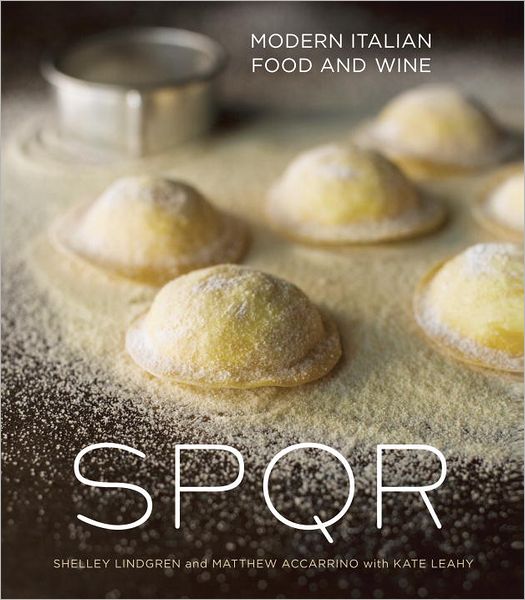





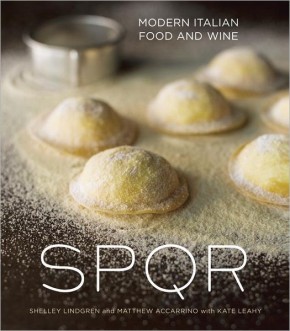
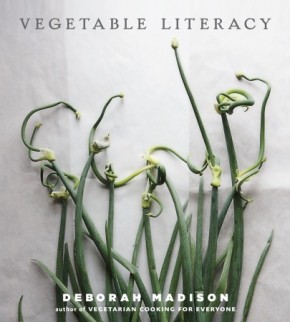
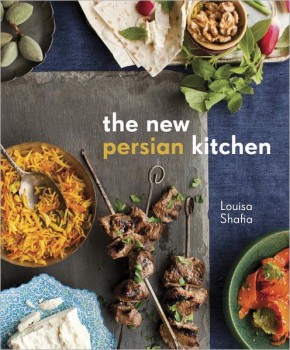
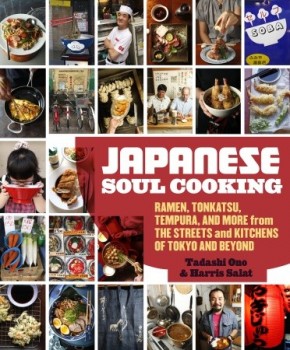
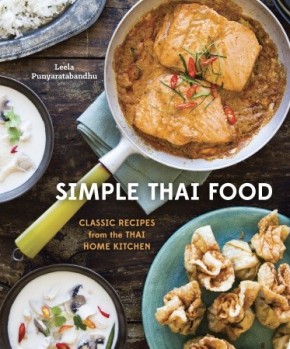

Leave a Reply